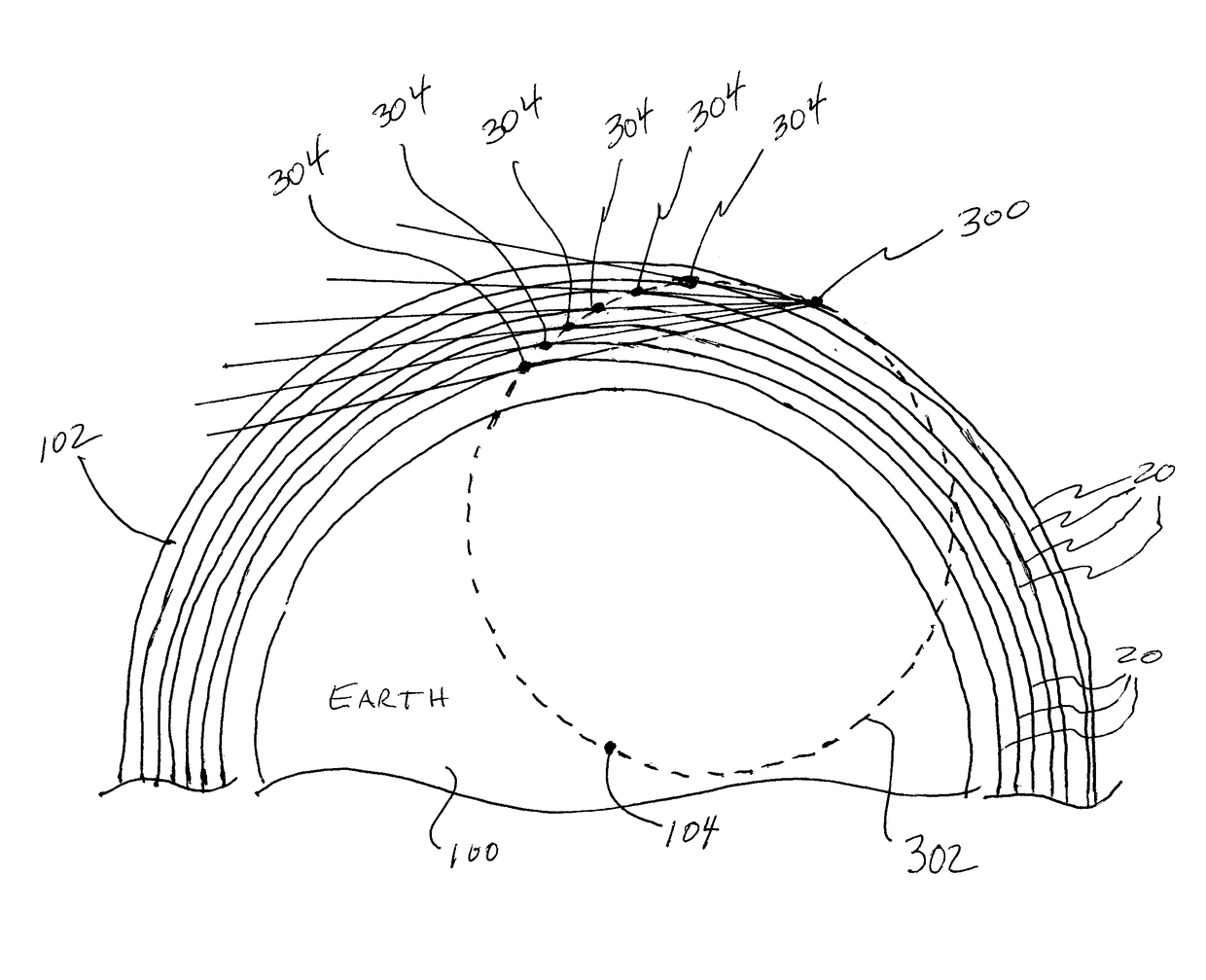Method of refraction angle mapping of earth's limb
a technology of refraction angle and mapping method, applied in the field of refraction angle profile generation, can solve the problems of limited temporal and spatial coverage of weather balloon network, limited gps-based temperature and pressure profile, and high cost of remote optical sensing instruments. achieve the effect of efficient and comprehensiv
- Summary
- Abstract
- Description
- Claims
- Application Information
AI Technical Summary
Benefits of technology
Problems solved by technology
Method used
Image
Examples
Embodiment Construction
[0017]Referring now to the drawings and more particularly to FIG. 1, a portion of the Earth is shown and is referenced generally by numeral 100. Surrounding or encasing Earth 100 is its atmosphere 102 that refracts light as the light passes through. The amount of refraction increases with density of the atmosphere. Accordingly, in general, light is refracted more near the surface of Earth 100 than at upper regions of the atmosphere. In regions beyond the atmospheric limb or space, light is not refracted.
[0018]Prior to explaining the method of the present invention, a few concepts will be explained. Continuing to refer to FIG. 1, various altitudes above Earth 100 are indicated by solid lines 200 encircling Earth 100 with an observation point being indicated by numeral 300 at an upper altitude. From observation point 300, a circle 302 can be defined whose diameter spans from observation point 300 to the center 102 of Earth 100. Lines extending from observation point 300 to tangent poi...
PUM
 Login to View More
Login to View More Abstract
Description
Claims
Application Information
 Login to View More
Login to View More - R&D
- Intellectual Property
- Life Sciences
- Materials
- Tech Scout
- Unparalleled Data Quality
- Higher Quality Content
- 60% Fewer Hallucinations
Browse by: Latest US Patents, China's latest patents, Technical Efficacy Thesaurus, Application Domain, Technology Topic, Popular Technical Reports.
© 2025 PatSnap. All rights reserved.Legal|Privacy policy|Modern Slavery Act Transparency Statement|Sitemap|About US| Contact US: help@patsnap.com



